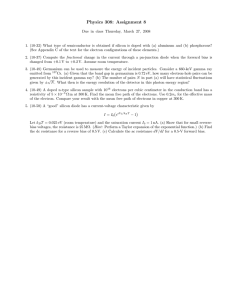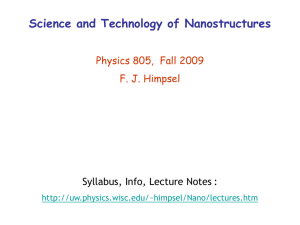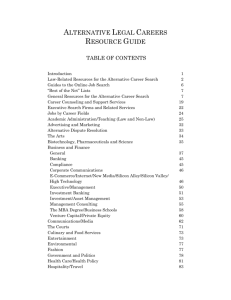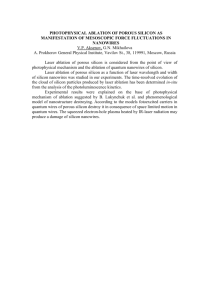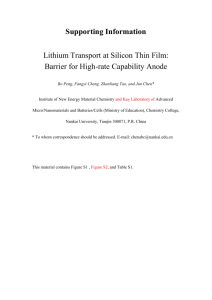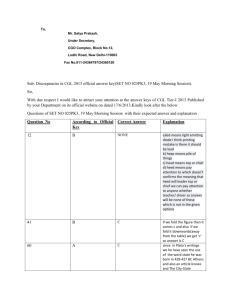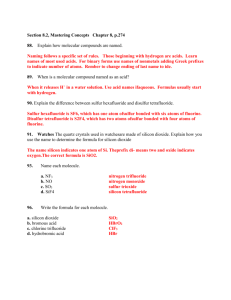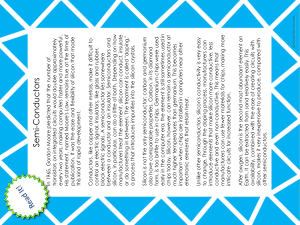Abstract - Wayne State University Physics and Astronomy
advertisement
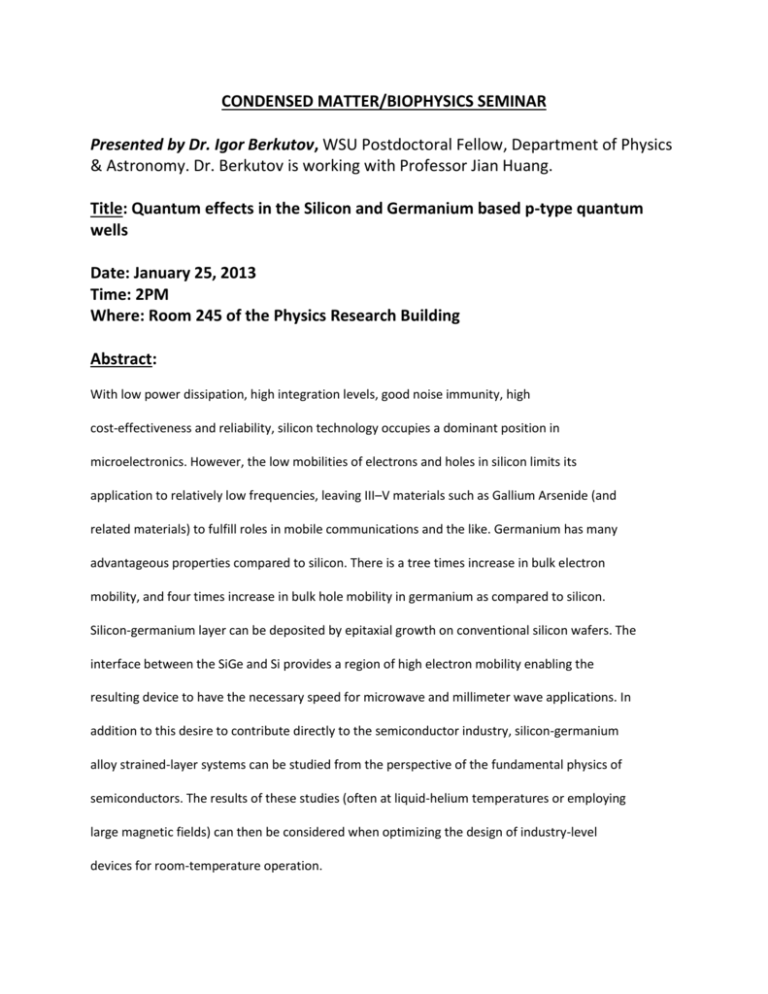
CONDENSED MATTER/BIOPHYSICS SEMINAR Presented by Dr. Igor Berkutov, WSU Postdoctoral Fellow, Department of Physics & Astronomy. Dr. Berkutov is working with Professor Jian Huang. Title: Quantum effects in the Silicon and Germanium based p-type quantum wells Date: January 25, 2013 Time: 2PM Where: Room 245 of the Physics Research Building Abstract: With low power dissipation, high integration levels, good noise immunity, high cost-effectiveness and reliability, silicon technology occupies a dominant position in microelectronics. However, the low mobilities of electrons and holes in silicon limits its application to relatively low frequencies, leaving III–V materials such as Gallium Arsenide (and related materials) to fulfill roles in mobile communications and the like. Germanium has many advantageous properties compared to silicon. There is a tree times increase in bulk electron mobility, and four times increase in bulk hole mobility in germanium as compared to silicon. Silicon-germanium layer can be deposited by epitaxial growth on conventional silicon wafers. The interface between the SiGe and Si provides a region of high electron mobility enabling the resulting device to have the necessary speed for microwave and millimeter wave applications. In addition to this desire to contribute directly to the semiconductor industry, silicon-germanium alloy strained-layer systems can be studied from the perspective of the fundamental physics of semiconductors. The results of these studies (often at liquid-helium temperatures or employing large magnetic fields) can then be considered when optimizing the design of industry-level devices for room-temperature operation. In this talk I would like to present our investigations which concerns of quantum effects in silicon and germanium based heterostructures with hole type of conductivity. This study mostly connected with investigation of magnetoquantum (such us Shubnikov-de Haas oscillations) and quantum interference effects (such us weak localization, hole-hole and spin-orbit interactions).
